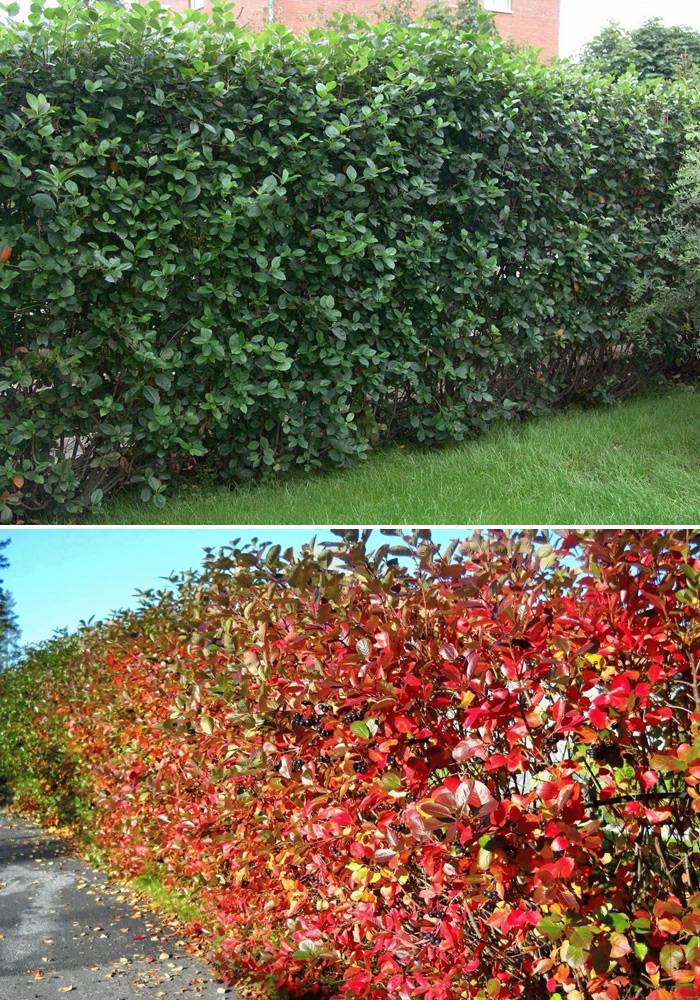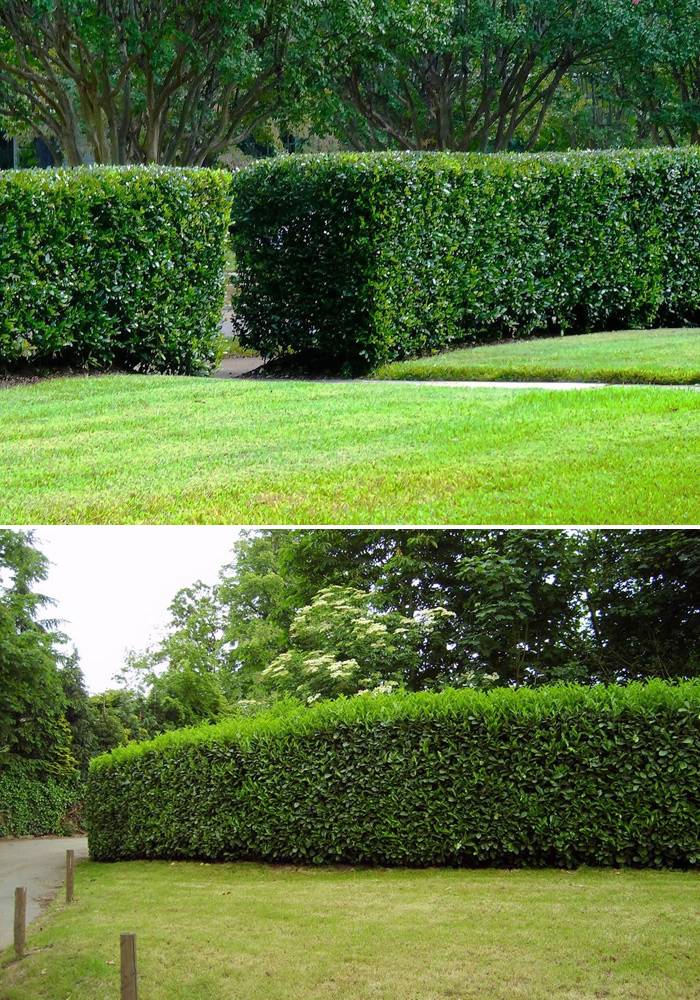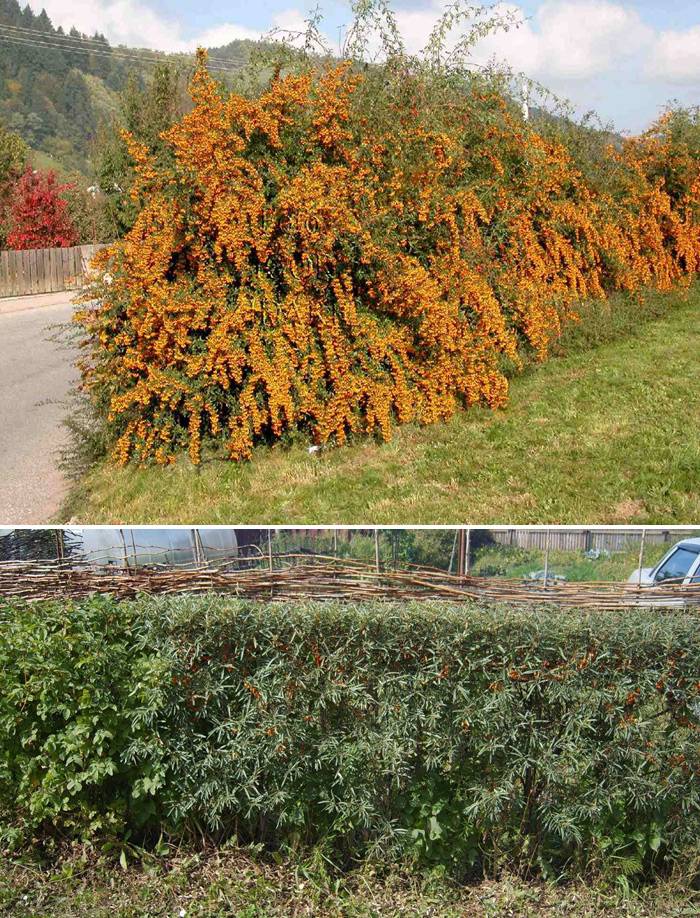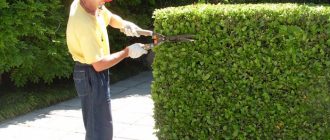A hedge is a very fashionable and original solution for fencing your own private territory. The historical roots of this design technique take us back to France in the 18th century. Since then, the fashion "does not let go" living fences in many countries of the world, because they not only miraculously please the eye, but also perfectly protect from the wind and uninvited guests. If you also choose a berry "edible" shrub for arrangement, then the practicality of such a choice grows significantly.
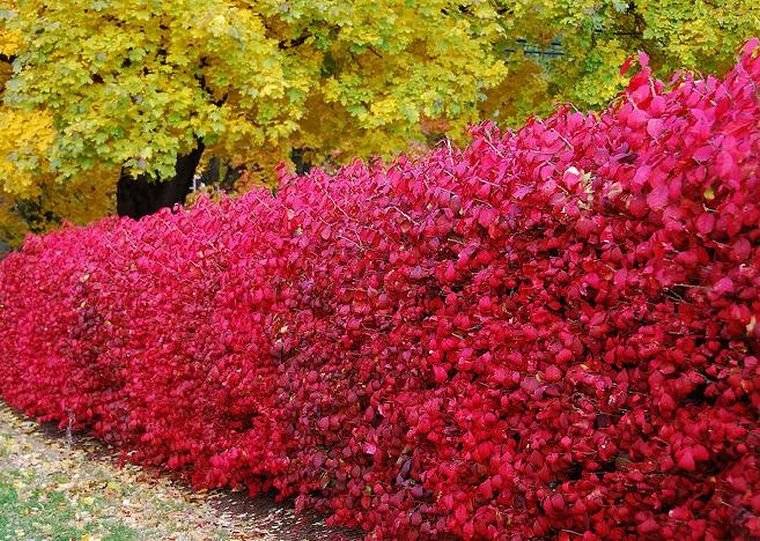
The only question remains: to plant berries without thorns or with thorns?
For protection from outsiders, the best solution would be to choose shrubs with thorns: sea buckthorn, rosehip, hawthorn or barberry. Irga, chokeberry or honeysuckle are suitable for harvesting without "prickly" problems.
Aronia instead of a fence
Chokeberry or chokeberry are ideal for hedges. This plant is completely unpretentious: any soil is suitable, the plant is not afraid of frost, withstands drought. Due to the many side shoots, it makes the fence solid and impassable. The beauty of the shrub pleases almost the whole year (except for winter): in the spring with white-pink flowers and a pleasant aroma, in the summer - with black berry beads, gathered in bunches, and in the fall - with dark purple leaves. In addition, the fruits are not only edible, but also medicinal.
Of the shortcomings, pruning can be distinguished several times per season, so that more side branches grow and periodic watering.
Honeysuckle - hedge decoration
Choosing a fence made of edible honeysuckle is a good option for obtaining a beautiful high (up to 2.5 m) fence, and even with tasty and healthy berries.
To grow it, you need constant haircuts, watering with feeding the bushes.
Please note that not all varieties of honeysuckle are edible. Soon we will write an article about which species can be used to make a hedge, so stay tuned (just subscribe to our channel at the bottom of the article).
Irga - tasty and healthy fencing
Dense thickets of this shrub perfectly serve as a living fence. The plant is not afraid of frost and dry days, has resistance to fungal diseases and various pests. The usefulness of irgi berries can be enumerated for a long time, since the content of trace elements, carotenes, pectins, vitamins C, P, B makes it a real "green doctor".
Of course, one cannot do without the attention of a gardener here either. But irga does not require special care. She needs a haircut 2 times a year, watering and fertilization after picking the berries.
Sea buckthorn - thorny protection of the site
The berries of this shrub have the most valuable medicinal properties. Thorns on branches will block the way for uninvited animals or people.
Of the disadvantages of growing, one can single out the necessary processing of plants from diseases and pests, as well as pruning once a year. Another inconvenience: to get a harvest, you need to plant not only female plants, but also several male plants nearby, since sea buckthorn is a bisexual plant. Large berries are obtained from varietal plantings, not wild plantings.
Barberry - "popular fence"
The thickened crown in combination with thorns perfectly obscures the view of your site from the street side. Different varieties of barberry have different leaf colors, and their combination will definitely decorate your territory. Red fruits are beneficial in cooking.
Among the disadvantages of cultivation, one can single out the requirements for the soil, feeding and treatment from diseases and pests.
Hawthorn - "thorny guard"
The wall of the fence made of this plant will block the path of uninvited guests, and beautiful leaves of different shades and red fruits will decorate any fence.
The hawthorn grows on any soil, it is not afraid of frost, but it loves light. It needs to be trimmed and dried branches removed.
Rosehip - "king of the hedge"
A rosehip fence will definitely not allow unauthorized persons to get through it. But many beautiful flowers, and then berries will adorn your fence. Rosehip berries have medicinal properties known since ancient times. Legend says that this shrub grew in the garden of the beautiful Aphrodite, and she used its beneficial qualities to maintain her beauty.
Rosehip is not whimsical at all, only it is necessary to limit its growing roots with pieces of slate so that the growth does not spread in unnecessary places.
Other types of "tasty" hedges
There are many more options for "edible" barriers. In addition to the plants already listed, one can name currants, thorns, Japanese quince, gooseberries, yoshta, cotoneaster and many others.

